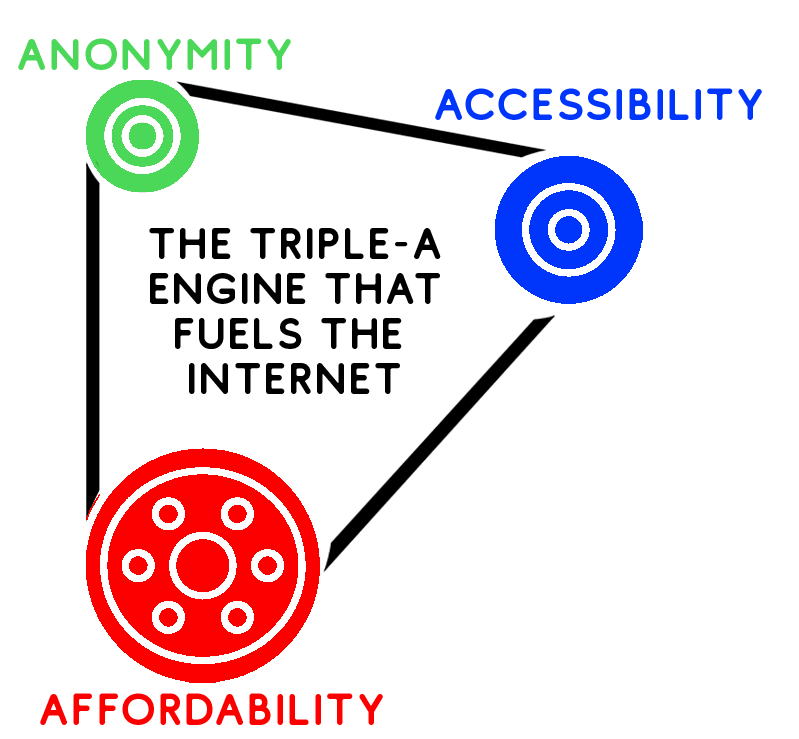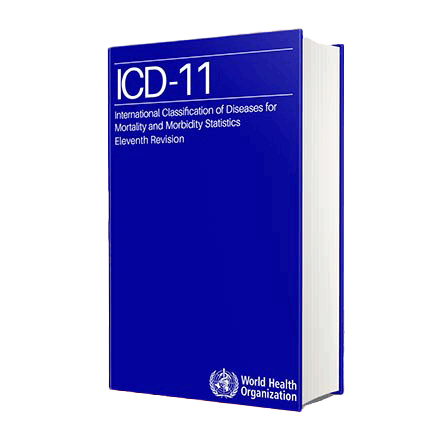Sex Ed Curriculum
Has Kids Turning to Porn
Dr. Brett Kennedy, Psy.D., CSAT
Specialist in Sex and Digital Media
Behavioral/Process Disorders
Sex Ed Curriculum
In This Article
The average age that US children are exposed to online pornography is between 11 and 13 years old. Widespread internet access and an abundance of free, online pornography websites have made it easier than ever before for kids to, accidentally or intentionally, view sexually explicit material. It’s normal for kids to be curious about sex, but online pornography websites are not a substitute for a medically accurate, sex ed curriculum. Fortunately, studies also show that communication between parents and their kids about sexual health can buffer kids against any detrimental effects of sexually explicit media. Therapists also play a crucial role in that we are often the first adults kids confide in about their online pornography use. But just what are the potentially harmful effects of online pornography? Parents, guardians, caregivers, educators and mental health professionals should read on to learn:
How Pornography Became the Substitute for a Sex Ed Curriculum
Sex is a fact of life and an important part of the human experience. One that kids are naturally curious about. Sex ed curriculum in the United States, however, is often lacking in medically accurate information. There are states with abstinence-only sex ed curriculum, states that don’t require information about birth control or condoms, and states that don’t require sex education at all. The result is that fewer U.S. teens are receiving formal sex educuation than in the past.
- Only 39 states and DC require sex or HIV education in public schools. Almost all of them (36 + DC) allow parents to remove their child from sex ed instruction.1
- Only 18 states require sex education to be medically accurate1
- All states where sex ed is taught require information on abstinence, and 28 of them require that abstinence be stressed.1
- 19 states require instruction on the importance of waiting until marriage to have sex.1
- Only 19 states require inclusion of information on condoms or contraception.1
- 6 states require only negative information to be provided on homosexuality and/or positive emphasis on heterosexuality.1
- The decision of how or whether to teach sex education is often left up to school districts where educators often prefer to prioritize academics.2
- Finally, while studies show that parents can help buffer their kids from negative effects of sexualized media, the rate at which parents are providing sex education to their kids appears too low to compensate for gaps in their formal education.3
1. Guttmacher Institute, Sex and HIV Education. 2021
2. Hall, K.S., et al., The State of Sex Education in the United States. Journal of Adolescent Health. 2016; 58: 595-597
3. Lindberg, L., et al. Changes in Adolescents’ Receipt of Sex Education. Journal of Adolescent Health. 2016; 58: 621-627
Compare this spotty state of affairs with the accessibility of online porn. Pornography in every imaginable genre is available for free, from any device, at any hour of the day. With most porn sites not verifying the age of their users.
Pioneering internet addiction researcher Dr. Al Cooper hypothesized that there are three main factors that give the internet its power and contribute to a lot of digital media overuse or addiction. He called them the Triple-A Engine: Accessibility, Affordability and Anonymity.

More than any other, the adult entertainment industry excels at utilizing all three.
Where other internet platforms run out of content or throw up a paywall, the adult entertainment industry just keeps churning out free porn.
And kids are accessing it.
One study of online pornography use in the United States revealed that 42% of 10 to 17 year olds had seen pornography online, with 27% describing the use as intentional.
It’s for this reason experts agree that kids and young adults should be armed with effective education aimed at preparing them for the inevitability of exposure to online pornography.
Why Online Pornography is Different
Unlike analog pornography, (in print, on videotape or on DVD), online pornography sites utilize algorithmic technology.
These are the same algorithms that are highly effective at getting people to spend hours binge-watching videos on platforms like YouTube, Netflix and Tik Tok.
But porn sites add to those very effective algorithms what scientists call supernormal stimuli.
Supernormal Stimuli
Stimuli are properties, like color or size, that are known to elicit a response in an organism.
Supernormal stimuli are exaggerated versions of those properties.
All living things can sense and respond to stimuli in their environment, and they tend to show a preference for those properties that have evolved in nature.
Scientists discovered that when an organism is offered an artificial, exaggerated version of a known stimulus, the organism will favor the artificially exaggerated stimulus over the naturally occurring one.
One example of this in human beings is our propensity towards junk food. Junk food provides an exaggerated stimulus for our salt, sugar and fat cravings.
Human brains evolved to crave salt, sugar and fat because our ancient ancestors so rarely encountered those properties in nature. They needed to store them up in large quantities when they were available.
In the modern world, there is no shortage of salt, sugar and fat, but this human drive to overconsume them still exists in our DNA. For this reason, many people have trouble curbing their intake of foods with these properties. Left unchecked, of course, the result can be detrimental to their health.
The same can said of pornography.
It seduces viewers through exaggerated depictions of physical properties known to stimulate the sex drive.
When sexually arousing super stimuli is paired with algorithmic technology the result is an unstoppable one-two punch. Unlike the finite pornography media of yesteryear, with online pornography, users find themselves losing hours of time as they binge on a non-stop, sensory feast. All in the service of selling ads on free pornography websites.
For kids with developing brains who have never experienced real sex before, this can have some startling effects.
Learn How Persuasive Design Is Used to Create Habit Forming Digital Media
Everything You Need to Know
Is Online Porn Addiction Real?
Therapists have seen a rise in young clients reporting that watching online pornography, often while masturbating, is a problem in their lives. Their grades are declining because they don’t get enough sleep, or they skip class altogether to stay home and watch porn. They feel depressed or anxious when they aren’t watching porn. Their partner is dissatisfied with their pornography consumption and is threatening to leave. Some even have difficulty becoming aroused during partnered sex, preferring to masturbate to porn instead. Symptoms like failing in school and relationships, experiencing depression and anxiety, and losing interest in things they used to love, are also common in people addicted to substances like drugs and alcohol. For this reason, clients may say they are, “addicted to online pornography.”
Officially speaking, though, science has been slow to recognize behavioral addictions.

Compulsive Sexual Behavior Disorder (CSBD), which can include problematic online pornography use, is included in the World Health Organization’s (WHO) 11th Revision of its International Classification of Diseases (ICD-11), which goes into effect in 2022. Although CSBD is listed as an impulse-control disorder, the diagnostic criteria are very similar to those for Gaming Disorder, which WHO recognizes as an addictive behavior disorder.
According to WHO, CSBD is characterized by a persistent pattern of failure to control intense, repetitive sexual impulses or urges resulting in repetitive sexual behavior. Symptoms may include repetitive sexual activities becoming a central focus of the person’s life to the point of neglecting health and personal care or other interests, activities and responsibilities; numerous unsuccessful efforts to significantly reduce repetitive sexual behavior; and continued repetitive sexual behavior despite adverse consequences or deriving little or no satisfaction from it. The pattern of failure to control intense, sexual impulses or urges and resulting repetitive sexual behavior is manifested over an extended period of time (e.g., 6 months or more), and causes marked distress or significant impairment in personal, family, social, educational, occupational, or other important areas of functioning.
It’s important to note that WHO does not consider distress entirely related to moral judgments to meet the criteria for CSBD.
Therapists & Educators:
The ICD-11, which recognizes Compulsive Sexual Behavior Disorder and Gaming Disorder,
goes into effect in 2022.
Prepare yourself with dTEC's webinar training
Intro to Digital Media Overuse; Assessment, Intervention & Treatment
How Online Porn Affects Kids
Sex researchers say that how pornography effects teenagers will depend on the teenager, as well as the culture.
Not all kids who are exposed to or even purposely watch pornography will suffer from negative effects. Many studies do show that there is a link between people who watch pornography and aggressive behavior. Though it’s important to note that correlation doesn’t equal causation. In other words, the jury is still out on whether pornography causes viewers to act more aggressively or whether aggressive people tend to watch pornography.
That said, findings from 22 studies across seven different countries revealed that pornography use correlated with actual sexually aggressive behavior in men and women, adolescents and adults, in the United States and in other countries, and after using both violent and nonviolent pornography. This correlation was similar before and after the advent and widespread use of internet pornography.
Another study surveyed 10-15 year olds nationally in the United States and found that intentional exposure to violent, X-rated material over time predicted an almost 6-fold increase in the odds of self-reported sexually aggressive behavior. However, exposure to nonviolent X-rated material was not statistically significantly related. The associations were similar for boys and girls.
While there is much debate between therapists and sex researchers about the direction of the relationship between pornography consumption and symptoms like depression, anxiety, and relationship dissatisfaction, there seems to be enough literature to show that some link does exist.
For today, it’s important that people suffering from problematic pornography use, or pornography addiction, find a supportive network of professionals, family, and friends who can help them get their lives back on track.
Which Conditions Commonly Accompany Internet Addiction and Digital Media Overuse?
What the American Academy of Pediatrics Says About Online Pornography
- "Online content is always 'on' and is portable, allowing access at any time and in any place."
- "It can be interactive and more engaging, so there is potentially increased learning and exposure time."
- "Extreme forms of violent or sexual content are more prevalent on the Internet than in other popular media." 27
- "Participation is private and anonymous, which allows children and adolescents to search for materials they could not search for in traditional media."
-
"Online media exposure is much more difficult for parents to monitor than media exposure in traditional venues."
AAP advises policy makers to facilitate media literacy around sexual media and make it part of sex ed curricula
- “Provide parents with education about the power of sexual media”
- “Provide tools to help parents recognize problematic sexual content, empower them to limit their children’s exposure to and creation of such content, and help them discuss its potential influence with their children;“
- “Facilitate partnerships between media producers or platforms and media researchers or health experts to limit problematic portrayals and increase healthy messages about sex and sexuality;”
- “Promote the development of innovative, evidence-based interventions that take media literacy beyond the classroom; and”
- “Stimulate research in which newer forms of sexual media, including social media and their influence on adolescents’ health and well-being, are examined.”
- Invest in the continuing development and dissemination of media literacy curricula.
- Make the discussion of sexual media and its influence an integral part of health and sex education in schools
Guidelines for Talking to Your Child About Online Pornography and Sex
Now that you know why you should talk to your kids about online pornography, you’re probably wondering how to talk to your kids about online pornography. Few other topics of conversation could be less desirable for both parties involved. The good news is you get to prepare first. We’ve gathered some guidelines and resources that will help you make the most of this important dialogue with your child.
- The earlier you start talking to your child, the better. If you’ve never talked to your teen about sex before, apologize first.
- Identify ahead of time what you want your kids to know.
- Be an authoritative parent. (Not to be confused with an authoritarian parent who rules with an iron fist.) Give your child the sense that you’re in control of the conversation, but don’t talk down, make threats, or use fear tactics.
- Allow your child to choose the time and place for the conversation so that they feel some autonomy.
- Share your values and concerns with your kids.
- Address sexual curiosity and let them know it’s normal.
- Be an approachable parent. Make sure your child knows you're available to talk about any subject.
- Don’t lecture. Have a discussion.
- Prioritize support over judgment.
- Find age-appropriate resources to help
- Have regular conversations. This is not a one and done thing! Revisit topics you’ve covered before so they can review.
- Remain calm and collected even if it appears your child has accessed pornography.
- Don’t assume your child is straight.
- Help your child identify and express personal boundaries.
- Practice active listening.

Resources for Parents on Porn Literacy and Sex Education
- Boston Public Health Commission – A porn literacy curriculum was developed to help youth interpret and make sense of the sexually explicit media to which they are exposed.
- Sex Ed Rescue has a list of sex ed resources for parents
- A list of third-party apps for monitoring or limiting screen use
- Amaze & Amaze, Jr. – AMAZE is a collaboration between experts in the field of sex education at Advocates for Youth, Answer and Youth Tech Health—to create an engaging, age-appropriate, online sex education resource. Be sure to check out their YouTube channel.
- SIECUS – The Sexuality Information and Education Council of the United States (SIECUS) is a national, nonprofit organization dedicated to affirming that sexuality is a natural and healthy part of life. SIECUS develops, collects, and disseminates information, promotes comprehensive education about sexuality, and advocates the right of individuals to make responsible sexual choices. It is acknowledged as the institutional voice of these concerns and a pioneer of the comprehensive sex education program.
- Sex Positive Families – Provides education and resources that help families raise sexually healthy children using a shame-free, comprehensive, and pleasure-positive approach.
- The Porn Conversation – A site created by independent, feminist porn director Erika Lust and her husband and production company co-founder Pablo Dobner where they collaborate with sex educators to provide a slew of age-appropriate resources for parents.
- Celebrity couples therapist Esther Perel has a Comprehensive Sex Education Sexual and Relational Health Resources page on her website
- “Be Real. Be Ready.” from Adolescent Health Working Group in California is a comprehensive relationship and sexuality curriculum for high school students developed to address the knowledge deficit left behind after decades of teaching young people abstinence-only sex education.
- SHAPE America (Society of Health and Physical Educators) has a wonderful blog post entitled, “Health Education Instruction on Media Literacy and Pornography” full of resources for parents
Need Help? Reach out.
Originally published on June 24, 2021



